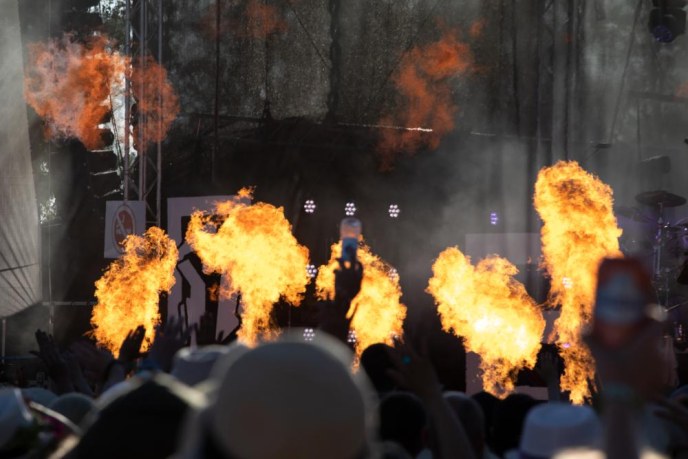Safety

Ensuring the safety of your event requires careful consideration. The police oversee compliance with the Assembly Act, rescue authorities ensure adherence to the Rescue Act, and Tukes (Finnish Safety and Chemical Agency) ensures compliance with the Consumer Safety Act in public events.
General matters
Action guidelines
- Submit the safety and rescue plan to:
- the local emergency authorities no later than 14 days before the start of the event
- the police no later than 5 days before the start of the event
- Consider incorporating consumer safety services into the plan or create a separate safety document.
- Check if the property's own rescue plan is suitable for a public event. Typically this is not the case, unless the event is part of the property's normal operations and is primarily organized by the property staff.
- If the event significantly affects traffic, also include a traffic plan.
- When planning large events, it is a advisable to contact emergency authorities already during the planning phase.
- Follow event-specific instructions from the police and emergency authorities, such as ensuring accessibility for emergency vehicles and proper placement of obstacles.
- Consider categorizing your event as either an active or passive event according to form of participation.
- Understand that the Tukes' consumer services specifically focus on the safety supervision of active public events.
- Take into consideration the more passive audience in large and crowded events, especially when the audience is large or the facilities restrict movement.
Event organizer's responsibilities
1. Responsibility of safety
The event organizer is responsible for the security of both free-of-charge events and events with an admission fee. The organizer is also responsible for drawing up a rescue and safety plan. A safety document in accordance with the Consumer Safety Act should be drawn up if more than 2,000 people are expected to attend the event at the same time or there is another minor significant risk of participation or transportation in the service under normal conditions.
2. Required permits and notifications
Most events, especially those held outdoors, require various permits or they must be reported to the authorities. Permit policies related to events can be found in the Permits and notifications page.
3. Venue map
Drawing up a map makes it easier to both plan the event as well as to draw up safety documents. It is recommended mark at least the following things on the map:
- borders of the event area
- stage(s)
- sales points
- restaurant tents
- water points
- toilets
- sufficiently wide (4 m) escape routes
- maintenance routes
- locations of signs
- locations of safety devices and rescue personnel, the first aid tent and the arrival point for emergency vehicles
4. Sales points and stalls
Sales points should be placed in such a way that there is plenty of room for people to move around in the area. Sales points must be easily accessible through the maintenance and rescue routes. For example, a cooking area where open fire is handled must have a fire blanket and a 6 kg portable fire extinguisher. Other fire extinguishers are usually also required in the event area. The usual amount is, for example, one portable fire extinguisher per 300 square meters. It is good to discuss the number of fire extinguishers with the rescue authorities.
5. Event Structures and Securing Safety
All structures brought to the event area – such as tents and canopies, gates, and stages – must be safely secured so they can withstand weather conditions like wind, rain, and snow.
Tents must always be anchored or weighted down properly. For example, light pop-up tents can fall over or fly away in the wind if they are not secured well. It is recommended to use at least 25–50 kg of weight per tent leg, or to follow the manufacturer's instructions. In windy weather, more weight may be needed.
If the structure includes electric equipment or metal parts, it should be grounded for safety. This is especially important for large or metal stages and towers.
We recommend discussing the safety of structures with the fire and rescue authorities or an electrical contractor, especially for large events or in challenging weather conditions.
6. Instructing the staff
It is extremely important that every staff member is aware of their own tasks and areas of responsibility. In addition, it is advisable to give safety instructions and a list of telephone numbers of the responsible persons to everyone working at the event.
7. Insurance for voluntary workers and liability insurance
Insurance is obtained for voluntary workers in case of accidents. Liability insurance covers personal and property damage to non-voluntary workers. You can get more information about different insurance options from insurance companies.
8. Security Staff Requirements
According to general police guidelines, there should be at least one security steward per 100 participants at an event.
The final requirement is assessed in cooperation with the authorities based on the nature of the event, the number of participants, and potential risk factors.
This number may increase, for example, if the event:
- includes alcohol service
- takes place in the evening
- is open to a broad public audience
- covers a large or hard-to-access area
Ask the police for guidance during the permit process – they will provide event-specific instructions.
